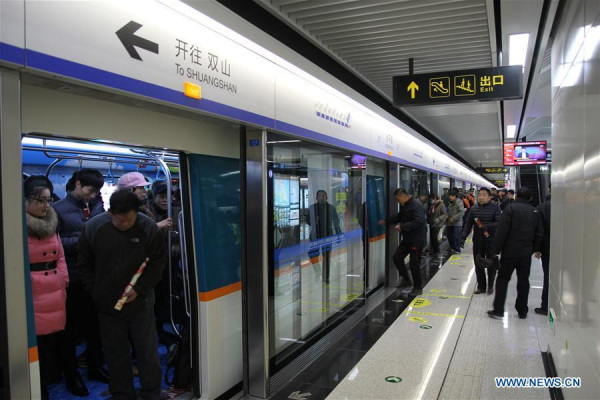
Tuesday's opening of the huge Shanghai Disney Resort Metro station, with its cool design that blends both Chinese and Disney elements, is the latest reminder of how far Shanghai has travelled in building its subway system.
In a little more than two decades, Shanghai has built the world's longest subway system. Now the network, 617 kilometers in total, is larger than that in London, New York and Moscow, although it will be overtaken in a few years by Beijing which has an ambitious construction plan underway.
In Shanghai, the subway is an efficient and environmental friendly means of mass transportation for the 24 million residents in a city where streets are increasingly clogged by the growing number of cars and where air is often filled with car exhaust fumes.
The average daily number of rides on the Shanghai Metro has already exceeded 9 million and is on the way to hitting 10 million.
Yet while it is a great way to get around the city, the lack of etiquette on the subway has become a major hazard, especially during daily rush hours.
The great thing, compared with previous years, is that most people are finally lining up to get on the train, but that does not mean they will let people get off first. So you might most likely be pushed back into the car if you don't hurry up.
Although Chinese rarely hug each other, even family members, that is not the case in the Shanghai Metro. You will be forced to have free hugs from strangers in a packed car, which are so packed that some say you need to take a run up to get on.
Such intimacy is truly embarrassing and almost never happens in Washington and New York, where the rush-hour subway is also extremely crowded. The rule there is no direct body contact or even eye contact, plain and simple. If you bump into others by accident, you have to apologize.
While "excuse me" is among the very first English phrases learned by those mostly young folks during Shanghai's rush hours, they don't use it at all. So when the train stops, you find people pushing from all directions trying to get out. Why is saying "excuse me" (duibuqi in Chinese) so difficult. Something so simple would make traveling on the subway easier and more pleasant for everyone.
What's worse is that those not getting off will often block the door instead of stepping out first to leave a passage for others.
Once out of the car towards the exit escalators, most Shanghai riders do not observe the "stand on the right and walk on the left" rule despite public campaign promoting those rules in the past years.
As someone who likes to walk up the escalators as an exercise, I find few Shanghai subway users do, and they will stand on both sides. Maybe they are just exhausted after the horrible rush hour ride, an exercise itself indeed.
A total of 37 Chinese cities have built or plan to build subway systems. And for Shanghai, the route length is expected to reach 800 km by 2020, with a total of 18 lines and some 500 stations, New York City, at 469, has the most subway stations in the world at present.
These statistics are impressive, however, Shanghai commuters need to be more considerate. Their sheer lack of etiquette now does not match well with the city's modern Metro system.
And that could also be the case for many other Chinese cities operating and building their subways.
The author Chen Weihua is deputy editor of China Daily USA.


















































